
©Woolly Thoughts 2020

We currently have around 90 afghans, which have been designed and created in the past twenty years.
Of these, approximately 70 are knitted and 20 are crochet. We have patterns available for most of them.
THE AFGHANS


FORMAT
All patterns are now available in pdf format.

SALES
Most PDF sales are handled by Ravelry.com where you will get an automatic download. All Ravelry sales require payment by PayPal.
A few sales are handled by the Woolly Thoughts PayPal link.

KNITTING SKILLS REQUIRED

CROCHET SKILLS REQUIRED
The skills required are very basic. You should be able to do:
Chain
Double crochet
Half treble
Treble
Note: These are UK terms and differ from US terms.

MATHEMATICAL SKILLS
No skills are required other than the ability to count.
You do not need to understand (or care about) the mathematics to be able to make the afghan.
Each afghan pattern is an individual booklet containing:
Full instructions for making the afghan
An explanation of the Mathematics represented in the design
A colouring-
Where appropriate, it will include:
Instructions for converting the afghan to a wall-
Variations on the design
BOOKLETS

A few patterns are also available in larger books:
Afghan Games contains all six board games
Maisie’s Mazes contains all mazes
COLLECTIONS
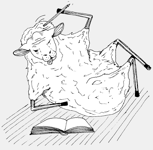

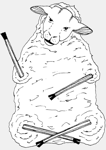
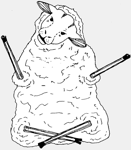
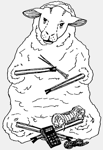
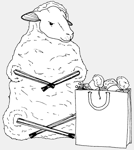
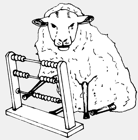
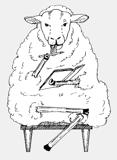

USING THE MATHEMATICS
The lists on the Afghan Classification page indicate the main mathematical concept behind each afghan.
There is also often a great deal more mathematics to be found in the design process for the construction of the afghan. For example, Pythagoras Theorem may have been involved in calculating a particular number of stitches. This underlying mathematics may be of particular value to anyone wanting to make or use an afghan in an educational context, in addition to those who have an interest in wanting to know why things work.
If you have no interest in knowing how the numbers are derived, you can simply follow the instructions.
The accessibility of a large scale piece, like an afghan, makes it an ideal way to promote discussion in a classroom situation on many different levels.
If you are interested in making an afghan in school (or with any other group of people see Instruction)
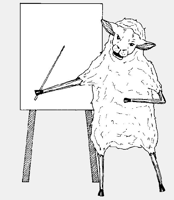

THE HISTORY

The skills required are very basic. For some designs the only skills needed are:
Garter stitch (every row knit)
Increase by knitting twice into a stitch
Knit two together

Only one yarn is used at a time.
Others may require you to:
Cast on
Cast off
Pick up stitches
We had no intention of making afghans until we received an email, in 1995, from Brown Sheep Co. Inc. asking if we would design an afghan for them. We agreed, not knowing what an afghan was. This name for a blanket or throw was not used in UK at that time. We did some research and eventually sent them four designs. They chose the one that we considered to be the least interesting. It was a design based on an idea we had used many times before and would use many more times afterwards.
That email completely changed our thinking and we never really went back to designing for sweaters and other conventional items. We realised that the large flat surface of an afghan could be a canvas to express mathematical ideas that would not fit on smaller items.
We were soon full of ideas and started to create large knitted ‘visual aids’ to be used in our own Mathematics classrooms. They were entirely for our own use. Before long, they were attracting interest from many quarters, and many people were asking to buy them. We didn’t want to sell them, partly we used them ourselves, partly because we didn’t want to make the same thing again for someone else when we had so many new ideas waiting to be made, and partly because the length of time taken to make them would make the costs prohibitive. We have only ever sold four and they were to the Science Museum (London). One doesn’t refuse when a National Collection wants to buy! We started to write booklets of instructions in response to the demand.
Afghans fall into a number of categories. They might be:
- A visual aid to help in explaining a mathematical idea or concept; to help in the visualization process; to give a concrete basis for work with geometry, algebra or number.
- An article to promote mathematical interest and questioning; to help in building mathematical vocabulary and thinking about mathematical problems in a more relaxed way.
- A ‘pretty picture’ with a mathematical basis used to brighten up a wall.
The first afghans were all knitted, using the Woolly Thoughts methods we had already been using for several years. They were either straight knitting or had shapes with angles that were always a multiple of 45 degrees; they only used one yarn at a time. We continued with these self-
Once we had broken away from our rules we were able to explore many ideas that had not been possible before -
You can read more in the Afghan Stories section.
| Introduction |
| Photos |
| Penrose Table |
| Needle Gauges |
| Tribute |
| Little Yellow Duck Project |
| Outside our house |
| Inside our house |
| New Photos 2011 |
| Dialysis photos |
| Other tributes |
| Maths & Puzzles |
| Puppets |
| Sum Wear |
| Toilet Roll Covers |
| Jewellery Dolls |
| Cushy Numbers |
| Pillows of Wisdom |
| Flexagon Cushions |
| Other Cushions |
| Spirals |
| Sweaters - Introduction |
| Hats |
| Scarves & Shawls |
| Crochet Möbius |
| Mathemagical Mittens |
| Mathematical Slippers |
| Simply Circles |
| Roman Mosaics |
| Woolly Thoughts Sweaters |
| Second Thoughts Sweaters |
| More Second Thoughts Sweaters |
| Waistcoats |
| Baby Jackets |
| Irrationals |
| Optical Illusions |
| Hyperbolic Hats |
| Octohats |
| Klein Bottle Hats |
| Mufflermatics |
| The Imitation Game |
| To Bias Or Not To Bias |
| Mostly Holes |
| Enwrapture |
| Maelstrom |
| Windmills Poncho |
| Cats |
| Dogs |
| Sheep |
| Eggsentricities |
| On a Roll |
| Snakes |
| The Sequel |
| Cushion Conglomeration Caper |
| Where to find us |
| Workshops |
| Afghans for schools |
| Group projects |
| Illusion Knitting Tutorials |
| Photos & Comments |
| Want a workshop? |
| South Tynedale |
| Tregarth |
| St Alban's |
| West Jesmond |
| St Oswald's |
| Beckermet |
| Earth School |
| Other schools |
| Cheshire WI |
| East Yorkshire WI |
| Beds Alzheimers Soc |